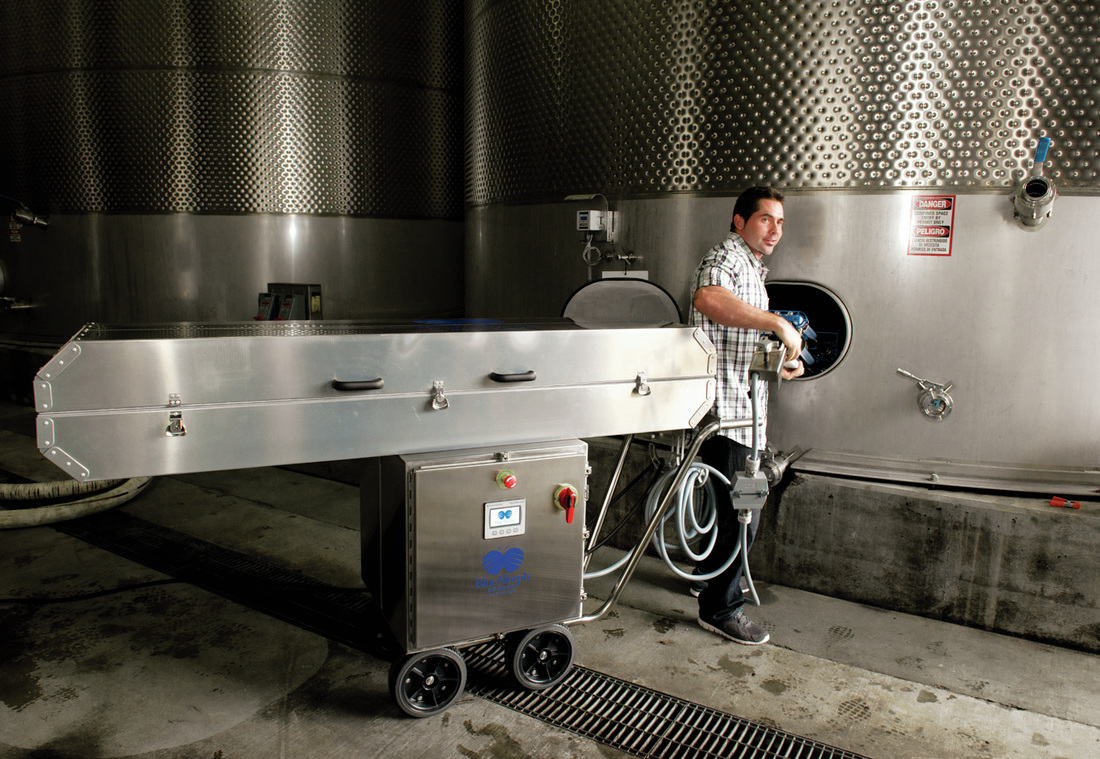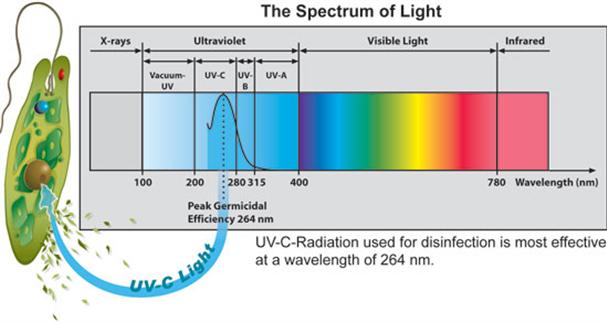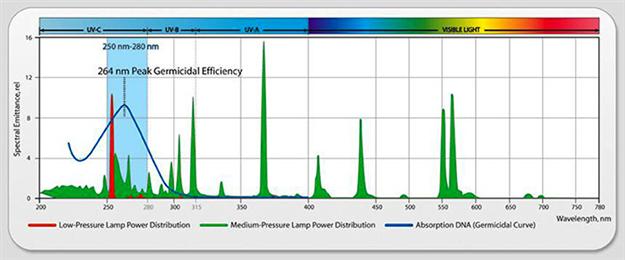UV Technology
BlueMorph
Where Sustainability and Business meet
Taken directly from Ultraviolet Germicidal Irradiation Handbook:
UVGI for Air and Surface Disinfection, W. Kowalski: Ultraviolet Germicidal Irradiation (UVGI) is electromagnetic radiation that can destroy the ability of microorganisms to reproduce by causing photochemical changes in nucleic acids. Wavelengths in the UVC range are especially damaging to cells because they are absorbed by nucleic acids. The germicidal effectiveness of UVC peaks at about 260–265 nm. This peak corresponds to the peak of UV absorption by bacterial DNA. In DNA, structures known as pyrimidine dimers are formed.
Although all UV wavelengths cause some photochemical effects, wavelengths in the UVC range are particularly damaging to cells because they are absorbed by proteins, RNA, and DNA (Bolton and Cotton 2008, Rauth 1965). Low pressure mercury vapor lamps radiate about 95% of their energy at a wavelength of 253.7 nm, which is coincidentally so close to the DNA absorption peak (260–265 nm) that it has a high germicidal effectiveness (IESNA 2000).




